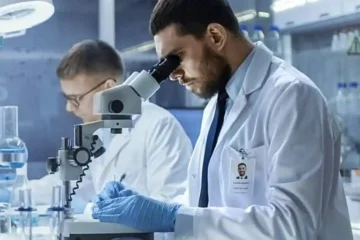Sclérose latérale amyotrophique (SI) is a progressive neurodegenerative disease that affects the nerve cells in the brain and spinal cord. As these cells deteriorate, they lose their ability to send signals to the muscles, conduisant à une faiblesse musculaire, atrophie, and eventually paralysis. ALS is a devastating disease with no cure, but recent advances in stem cell therapies offer a potential glimmer of hope.
ALS Treatment: Un aperçu complet
ALS is a complex disease with multiple factors contributing to its progression. Treatment typically focuses on managing symptoms and improving quality of life. Current treatments include medications to slow disease progression, physical therapy to maintain muscle function, and respiratory support to assist with breathing.
Thérapies par cellules souches: Une approche prometteuse
Stem cell therapies have emerged as a promising approach for treating ALS. Stem cells are undifferentiated cells that have the potential to develop into any type of cell in the body, y compris les cellules nerveuses. By transplanting stem cells into the damaged areas of the brain and spinal cord, scientists hope to replace lost nerve cells and restore lost function.
Types of Stem Cells for ALS Treatment
Several types of stem cells are being investigated for ALS treatment, each with its unique advantages and disadvantages.
Cellules souches dérivées de la moelle osseuse
Cellules souches dérivées de la moelle osseuse (BMSC) are easily accessible and have shown some promise in early clinical trials for ALS.
Cellules souches adipeuses
Cellules souches adipeuses (ADSC) are obtained from fat tissue and have similar properties to BMSCs.
Umbilical Cord Blood-Derived Stem Cells
Umbilical cord blood-derived stem cells (UCBSCs) are collected from the umbilical cord after birth and offer a rich source of stem cells.
Cellules souches mésenchymateuses
Cellules souches mésenchymateuses (MSC) are found in various tissues throughout the body and have been shown to have neuroprotective effects.
Cellules souches neurales
Cellules souches neurales (NSC) are derived from the brain and spinal cord and have the potential to directly differentiate into nerve cells.
Cellules souches pluripotentes induites
Cellules souches pluripotentes induites (iPSC) are generated from adult cells by reprogramming them back to a stem cell state. They offer the potential for personalized treatments tailored to individual patients.
Méthodes de livraison de cellules souches
Stem cells can be delivered to the damaged areas of the brain and spinal cord through various methods, y compris injection directe, transplantation into the cerebrospinal fluid, or use of a biomaterial scaffold.
Essais cliniques et recherche actuelle
Numerous clinical trials are currently underway to investigate the safety and efficacy of stem cell therapies for ALS. Early results have shown some promising signs, but larger and longer-term studies are needed to determine the full potential of this approach.
Défis et orientations futures
While stem cell therapies hold great promise for ALS treatment, plusieurs défis demeurent. These include finding the optimal type of stem cell, developing effective delivery methods, and overcoming the immune response. Future research will focus on addressing these challenges and advancing stem cell therapies towards clinical application.
Stem cell therapies offer a potential new frontier in the treatment of ALS. Bien que des recherches supplémentaires soient nécessaires, the early results are encouraging and suggest that stem cells may one day provide a much-needed cure for this devastating disease.


